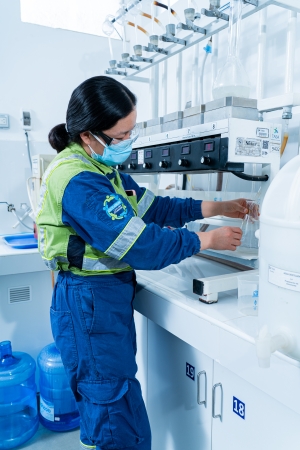24th July 2025
 Due to the high presence of juveniles in the daily catches, the Peruvian authorities declared the end of the first fishing season of 2025 in the North-Central zone of Peru on 23rd July, with an additional 24-hours window granted for the final landings. More than 80% of the 3-million-mt anchovy quota has been fulfilled in the North-centre, while the second fishing season has officially opened in the South.
Due to the high presence of juveniles in the daily catches, the Peruvian authorities declared the end of the first fishing season of 2025 in the North-Central zone of Peru on 23rd July, with an additional 24-hours window granted for the final landings. More than 80% of the 3-million-mt anchovy quota has been fulfilled in the North-centre, while the second fishing season has officially opened in the South.
In May 2025, according to IFFO’s market intelligence reports*, the total cumulative fishmeal production decreased by approximately 2% compared to the same period in 2024. This decline was mainly driven by lower output in Peru and Northern European countries. All other regions reported year-on-year growth in fishmeal production over the same period.
As for fish oil, total cumulative output for the year through May 2025 slightly decreased year on year. Similarly to fishmeal, most countries showed a positive trend compared to January–May 2024, but this was nearly offset by declines in the performance of European countries and Peru. In the case of Peru, the lower oil yields reported during the current season played a significant role in the decline.
“IFFO’s 2025 estimates for fishmeal and fish oil remain at 5.6 million tons of fishmeal and 1.2-1.3 million tons of fish oil” Dr Enrico Bachis, IFFO’s Market Research Director, has commented.
* This data is based on statistics shared by IFFO members in Chile, Denmark, Faroe Islands, Iceland, Ivory Coast, Mauritius, Norway, the UK, the USA, Peru, South Africa and Spain, accounting for 40% of global fishmeal production and 50% of fish oil output.
In China, main raw materials for FMFO production are currently from frozen fish and by-products
 China's domestic production of marine ingredients remains subdued for the time being, as fishing bans remain in place along the Chinese coastline. The main raw materials for producing fishmeal and fish oil during the summertime tend to come from frozen fish and by-products from processing facilities. Domestic production of marine ingredients in the first half of 2025 decreased in comparison to the same period a year ago.
China's domestic production of marine ingredients remains subdued for the time being, as fishing bans remain in place along the Chinese coastline. The main raw materials for producing fishmeal and fish oil during the summertime tend to come from frozen fish and by-products from processing facilities. Domestic production of marine ingredients in the first half of 2025 decreased in comparison to the same period a year ago.
Demand for aquafeed has not increased much in the first half of 2025. Several factors contribute to this subdued outlook, starting from a smaller carryover stock of farmed species from the year 2024, farmers’ active sales to take advantage of partial price recoveries, and delayed spring stocking due to lower temperatures. However, the increased stocking activity in the first half of this year, coupled with declining feed costs and a more optimistic outlook for profitability, suggests that aquafeed demand might rebound in the second half of 2025. Overall, total aquafeed demand for the year may surpass that of 2024, boding well for a robust demand for marine ingredients too.








